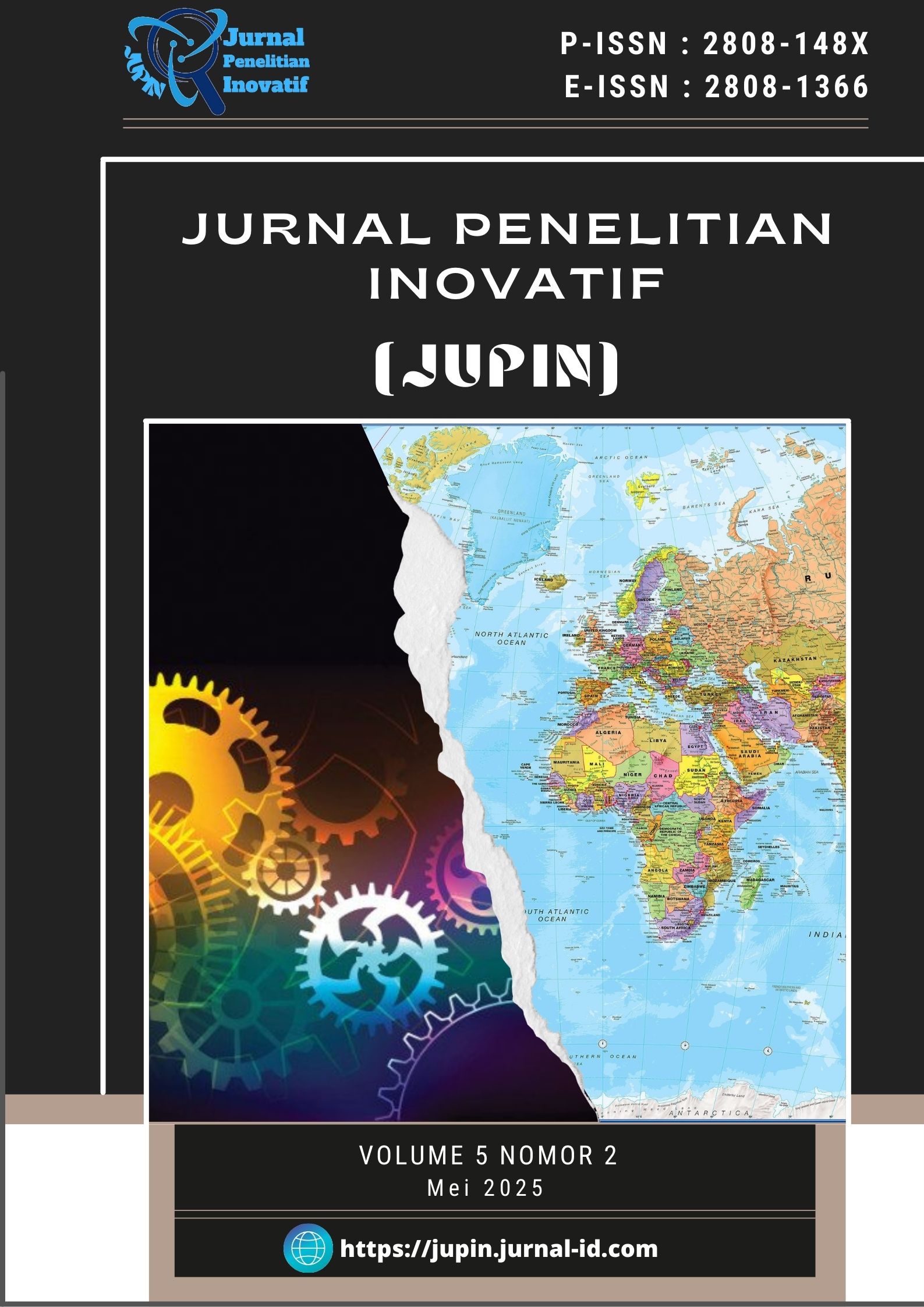A Cognitive Stylistic: Irony and Sarcasm in The Lyrics of Lana Del Rey’S “Norman F***Ing Rockwell!” Using Schema Theory
DOI:
https://doi.org/10.54082/jupin.1501Kata Kunci:
Cognitive Stylistics, Irony, Sarcasm, Schema Theory, Song LyricsAbstrak
This study explore how figure of speech in Norman Fucking Rockwell! by Lana Del Rey is construct meaning through cognitive stylistic lens with focus on schema theory, approached by cognitive stylistics, specifically, the use of schema theory. Using qualitative textual analysis, this study investigates key lyrical expression that evoke disillusionment and critique idealized romantic narratives. It examines the use of irony, sarcasm, metaphor and repetition, interact with listener’s cognitive frameworks to decipher the implications of its message of normative schema of love and masculinity. Sarcastic lines like “Godd**n, man-child” and ironic contrasts such as “Why wait for the best when I could have you?” disrupt conventional expectations and prompt interpretive reevaluation. The findings show that these figures of speech are not merely rhetorical devices but central mechanisms in activating and subverting audience schemata, thereby deepening the emotional complexity and critical stance of the song. This study contributes to a clearer understanding of how cognitive stylistic features especially irony and sarcasm shape listener interpretation and reveal layered meaning in lyric based narratives.
Referensi
Abrams, M. H. (2018). Glossary of Literary Terms. In The Anthem Guide to Short Fiction. https://doi.org/10.2307/j.ctt1gxp787.27
Arditami, P. R. (2017). An Analysis of Figurative Language Found in Katy Perry’s Song Entitled “Firework”. Lingua Scientia, 24(2), 45. https://doi.org/10.23887/ls.v24i2.18799
Attardo, S. (2000). Irony as relevant inappropriateness. Journal of Pragmatics, 32(6), 793–826. https://doi.org/10.1016/S0378-2166(99)00070-3
Burgers, C., Van Mulken, M., & Schellens, P. J. (2012). The use of co-textual irony markers in written discourse. Humor-International Journal of Humor Research, 44(11), 1474–1485. http://dx.doi.org/10.1515/humor-2013-0004
Eysenck, M. W., & Keane, M. T. (2015). Cognitive psychology: A student's handbook (7th ed.). Psychology Press.
Fauconnier, G., & Turner, M. (2002). The way we think: Conceptual blending and the mind’s hidden complexities. Basic Books.
Giora, R. (1995). On irony and negation. Discourse Processes, 19(2), 239–264. https://doi.org/10.1080/01638539509544922
Jeffries, L., & McIntyre, D. (2010). Stylistics. Cambridge University Press.
Lakoff, G., & Johnson, M. (1980). Metaphors we live by. University of Chicago Press.
Perone, J. (2020). Lana Del Rey’s Born to Die. Rowman & Littlefield.
Putra, A. S., Dalpah, Cintya, N. (2024). Analysis of Figurative Language Used in Selected Song Lyrics by Niki Zefanya. Pubmedia Jurnal Pendidikan Bahasa Inggris, 1(4) 1-12, doi. https://doi.org/10.47134/jpbi.v1i4.738
Semino, E., & Culpeper, J. (2002). Cognitive stylistics and the nature of fictional discourse. Language and Literature, 11(4), 307–328. https://doi.org/10.1177/096394700201100401
Simanjuntak, W. O., Saragih, S. E., Manurung, R. A., Sihotang, T., Alivia, C. P., & Rangkuti, R. (2023). A Cognitive Stylistic Analysis of Lewis Capaldi’s Song Someone You Loved”. KLAUSA: Kajian Linguistik, Pembelajaran Bahasa, dan Sastra, 7(2) 58-68, doi. https://doi.org/10.33479/klausa.v7i2.880
Simpson, P. (2014). Stylistics: A resource book for students. Routledge.
Sirait, A. L., Siburian, J. B., Sitompul, I. M., & Rangkuti, R. (2024). A Cognitive Stylistic Analysis of Pink Floyd’s Song Lyric “Time”. KLAUSA: Kajian Linguistik, Pembelajaran Bahasa, dan Sastra, 8(1) 40-52, doi. https://doi.org/10.33479/klausa.v8i1.903
Stockwell, P. (2002). Cognitive poetics: An introduction. Routledge.
Zephanda, M., Nasution, F. H., Nasution, M. S., Siregar, L. H. A., & Rangkuti, R. (2024) A cognitive stylistic of Taylor Swift’s song “I can do it with a broken heart”. EnJourMe (English Journal of Merdeka): Culture, Language, and Teaching of English, 9 (1) 62-69, doi. https://doi.org/10.26905/enjourme.v9i1.13118
Unduhan
Diterbitkan
Cara Mengutip
Terbitan
Bagian
Lisensi
Hak Cipta (c) 2025 Dinillah Arifah, Anggi Yolanda Sigalingging, Rahmadsyah Rangkuti

Artikel ini berlisensi Creative Commons Attribution 4.0 International License.


















